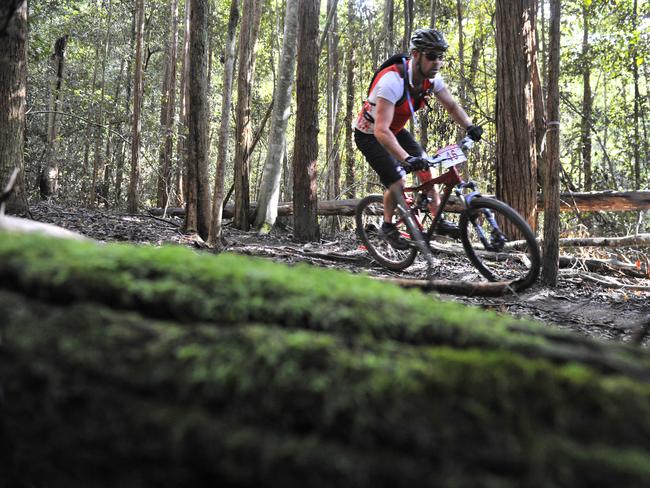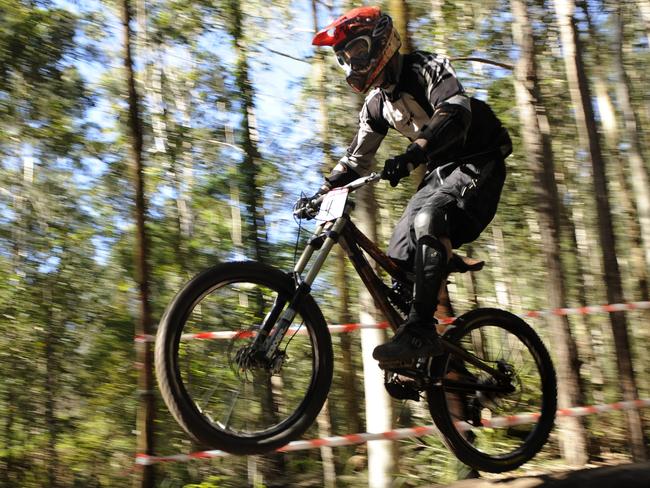Report to establish a Central Coast mountain bike plan goes before council
Dedicated mountain bike trails will be built along with dirt jumps in suburban areas, while unauthorised trails will continue to be closed, under plans to formalise council’s approach to the sport.
Central Coast
Don't miss out on the headlines from Central Coast. Followed categories will be added to My News.
With the popularity of mountain biking exploding in the wake of Covid restrictions, Central Coast Council Administrator Rik Hart is expected to endorse the development of a formalised approach to managing the sport in public reserves at tomorrow night’s meeting.
It comes after council sought public feedback earlier this year, which led to three options being identified to support sustainable mountain biking on the coast including the development of a formal plan, continued education, enforcement and tail closures and trialling selected sites for dirt jumps.
Council began a feasibility study into mountain biking in 2019 in response to the increasing construction of unauthorised trails and requests for more dedicated trails to meet local demand and eco-tourism.

However the construction and use of unauthorised trails also drew the ire of bushwalkers and environmentalists who said they posed a risk to the community and the environment.
It also saw several unauthorised trails “booby-trapped” with nails and other spikes hidden under mulch and wires tied between trees.
A report to council’s meeting states the number of unauthorised trails and dirt jumps “more than doubled “`during the Covid restrictions last year.
“In response council commenced proactive patrols in natural reserves and monitoring of open spaces,” the report states.
“A number of unauthorised trails and jumps were removed and land remediated. These actions have not been effective in all locations and the number of unauthorised trails and jumps on council land and associated risks continue to increase. Reactive management, including repeated closure of some unauthorised trails, has diverted finite resources from other projects and programs in council’s natural reserves.”

The report states council’s current ad hoc approach was likely to increase the risk of “irreversible damage to aboriginal heritage sites and biodiversity values” and the serious injury or death of riders, bushwalkers or wildlife.
It also found the current approach could lead to ongoing conflict between riders and bushwalkers along with further vandalism to council reserves and natural assets.
However the feedback from the consultation period from February 22 to March 22 identified a “strong consensus” among all users that shared trails were not suitable to both riders or bushwalkers.
The report states the formal Central Coast Mountain Biking Plan is expected to take about 18 months and cost an estimated at $310,000 to produce and should be considered in council’s budget.
More Coverage






